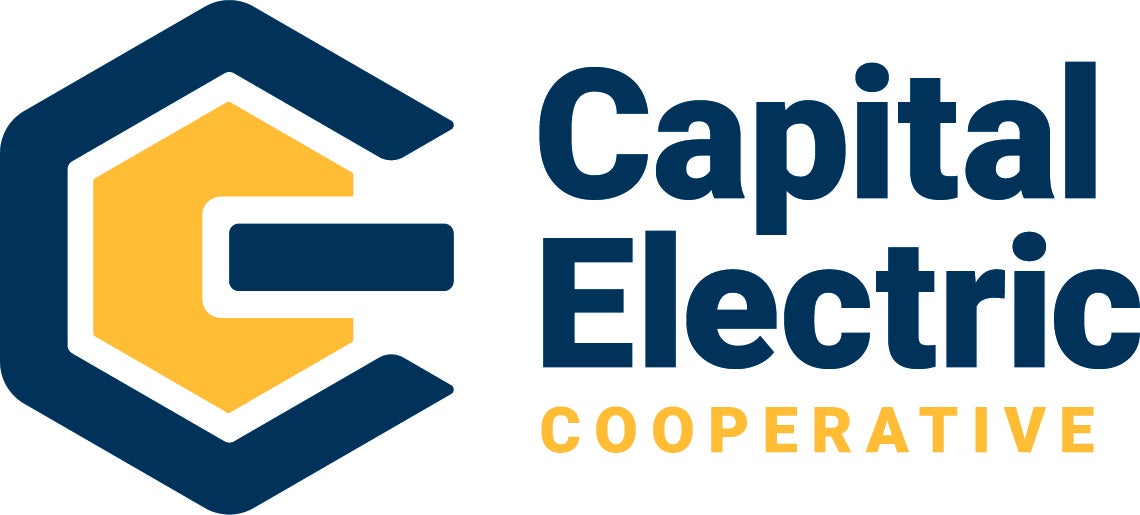A year later: Capital Electric Cooperative reflects on 2021 energy emergency
BY KRISTA RAUSCH
One year ago, extreme temperatures, unprecedented energy demand and an interruption in natural gas supply triggered power shutoffs in parts of North Dakota. On the anniversary of this event, we reflect on what happened and what members can expect if a similar event occurs.
What happened?
The electric grid, which connects energy producers to energy consumers, is an extremely complex system with a sophisticated series of controls that monitor power coming on and off of the grid. Electric cooperatives combine transmission and generation resources with many other utilities across multiple states and provinces to power and strengthen this interconnected grid. This flow of power is monitored, coordinated and controlled through regional transmission organizations (RTOs),
which are granted certain responsibilities and authorities by the Federal Energy Regulatory Commission (FERC) related to ensuring the reliability of the bulk electric system in our region. Capital Electric Cooperative (CEC) is served by two RTOs — the Southwest Power Pool (SPP) and Midcontinent Independent System Operator (MISO).
RTOs manage the power to ensure supply meets demand. Most of the time, controlling this power is uneventful, but during extreme weather events when demand exceeds supply, RTOs must reduce demand in order to balance the electric grid. Controlled power outages are a last resort to prevent the grid from failing, and the decision to implement emergency outages is typically made in a matter of minutes.
From Feb. 13–17, 2021, a rare winter storm resulted in more than 170 million Americans being placed under winter weather alerts. Extremely low temperatures across a multi-state region resulted in an energy crisis due to increased power demand. The frigid temperatures strained supply of natural gas for power generation, limited wind generation and forced some nuclear generation sources offline.
On Feb. 16, SPP declared an Energy Emergency Alert (EEA) Level 3 when system wide generating capacity dropped below power demand. To protect the stability of the power grid, SPP ordered its transmission operators to curtail loads and implement controlled service interruptions. This action, known as load shedding, is used to relieve stress on the grid of generators and transmission lines to protect against widespread system failure. In each event, power was restored in less than an hour; however, some local electrical systems became overloaded, resulting in longer outages. Line workers were dispatched, and power was quickly restored.
Prior to the event and throughout the next several days, North Dakota's electric cooperatives worked with members, government officials and the media, alerting them of EEA status and asking them to conserve energy to avoid further rolling blackouts.
This is the first time SPP has declared EEA Levels 2 or 3 for its entire region. It is also the first time the grid operator has ordered controlled, temporary service interruptions to prevent widespread blackouts.
In March 2021, SPP conducted a comprehensive review of the event to identify opportunities to better prepare for future extreme reliability threats. It identified 22 actions, policy changes and assessments related to fuel assurance, resource planning and availability, emergency response and other critical areas.
Communications for future energy emergencies
While the weather events that led to the February 2021 energy crisis were unprecedented, it is important for CEC and its members to be prepared for any future energy emergencies that might occur.
CEC uses a variety of mediums to communicate with its members, including the co-op’s website, social media accounts and SmartHub, CEC’s online account management resource. In the event of a future energy emergency, information will be posted on these sites.
In addition, members registered for SmartHub will receive real-time alerts at the email address associated with the account. They may also receive text messages if a phone number is provided. To streamline emergency notifications, the co-op encourages all members to register for SmartHub using a valid email address and cellphone number. To sign up, visit capitalelec.smarthub.coop.
EEA's will be issued in increasing order of severity:
• EEA Level 1: This alert is issued when all available resources have been committed to meet obligations, and the RTO is at risk of not meeting required operating reserves. The market normally has power reserves (extra generation ready to go). An EEA
Level 1 indicates an RTO may need to dip into those reserves to keep the power on.
• EEA Level 2: This alert is issued when an RTO is using all available power generation (including reserves) to keep the power on. Members should reduce their energy consumption and prepare for an outage. Simple, effective ways for members to
meaningfully conserve energy include adjusting thermostats; scheduling appliances like dishwashers and washing machines to run during off-peak times or delaying cycles altogether; and keeping doors, windows and blinds shut to retain heat in
their houses.
• EEA Level 3: At this level, demand has exceeded all available generation sources and load must be reduced to keep the grid intact.
What to do in the event of an outage
CEC thanks its members for their patience during weather outages and other energy emergencies. The co-op strives to provide safe, affordable electricity to its 18,453 members and is proud of its overall system reliability. Excluding power supply events such as the one in February 2021, CEC members experience less than 25 minutes of service interruption in an average year.
In the event of an outage, members can notify the co-op through SmartHub or by calling (701) 223-1513. Please do not report outages via the co-op’s Facebook, Twitter or Instagram accounts, as these accounts are not monitored outside of normal business hours.
Outages can also be monitored using CEC’s online outage map, available at capitalelec.com. For more information on the February 2021 weather event, visit capitalelec.com/power-outage-information.
